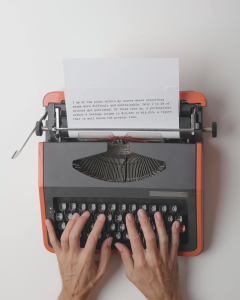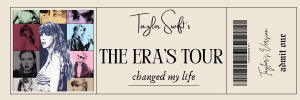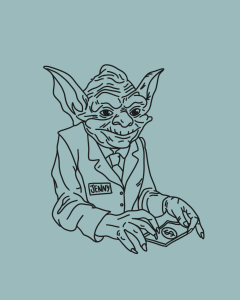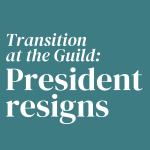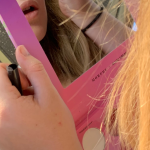By Rory Hawkins
Alongside my recent review for Glass of The Cutting – a social-commentary-meets-love-triangle set (mostly) in 2016, and the second novel from Sydney barrister and author Richard McHugh – I was lucky enough to be given the opportunity by Penguin Random House to send a few interview questions to Richard via email.
From just asking after inspirations and writing process, Richard detailed a score: the realities of writing fiction; an argument on Trump (actually relevant for a novel set in 2016); and much more. I especially enjoyed finding out more about his approach to writing characters and seeing where the wit from The Cutting’s prose comes from – Richard’s own sense of irony and to-the-point observations. Read on to find out more on The Cutting!
***
As a Creative Writing student myself, I want to ask about your novel as well as you and your writing process. So, first thing’s first! Do you consider yourself a plotter, a pantser, or someone in-between?
I’m definitely not a plotter (see below). But I wouldn’t say I just set off and see where I end up. I’ll make notes as things come to me, and I’ve usually got some idea of where I’m going – sometimes too many ideas! That was an issue with this book and led to two pretty substantial redrafts.
What kinds of authors and books (fiction and non-fiction) are you drawn to reading? How have these affected the topics and tone you aim for in your own writing, especially in regard to The Cutting?
I don’t read a lot of non-fiction books (although I’m just finishing Mary Beard’s SPQR right now), but I do read a fair bit of long-form journalism.
I like a pretty wide range of fiction, but social and psychological novels attract me the most. Which sends me into the nineteenth century a lot: Jane Austen, George Eliot, Emile Zola, Henry James and many others. Of people writing today, Hilary Mantel and Jonathan Franzen are among those I most admire. I don’t think what I’ve read across my lifetime affects the overall tone or style of my writing; at least, I’m not conscious of it, and I’m not trying to emulate anyone. But when I’m writing I do avoid reading fiction. Too much Henry James and my syntax becomes very particular.
What in The Cutting do you think is most inspired from your career as a barrister? While it doesn’t focus on the inner workings of law, it does have Justine and Lance argue over political ethics and class – what do you want readers to take away from your novel’s discussion around these?
I don’t think much if anything of the book is inspired by my legal career. But I’ve been exposed to a lot of things in my day job that (for better or worse) give me the confidence to write about, e.g., how a corporate collapse might play out.
As for what I want from readers: we don’t talk much in this country about money and class, especially in fiction. I just want people to engage with those subjects.
This one might be too cliché: are your characters based on anyone you’ve known in real life?
No, happily, these people don’t exist – they’re all made up. Some aspects of the characters are amalgams of streaks in people I’ve known, like the uni student self-certainty in Justine. But that was back in the 1980s and 90s. I’m sure there’s no one like that left on campus these days.
What seemed to come first: characters, setting, or plot? What was the first scene you could “see” happening? Did the direction you wanted to take with the novel change at any point?
I always start with the characters rather than a specific plot; the relationships between the characters then drive the story. But the characters can evolve quite radically as I write, like with Lee-Anne.
As best I recall, the first scene I pictured, and wrote, was the very first scene in the book. That sea of miners about to get sacked was very clear in my mind’s eye. And it let me inject class into the very first sentence: Will looking down on them as his own situation slips out of control.
Yes, the direction changed a lot. Justine’s brother Alan had a whole story of his own that got cut (not interesting enough!). The trajectory and ending of Part Two changed after the first draft, for a whole range of reasons.
The non-linear aspect was always there. Part One was always each main character’s story, moving backwards and forwards in time. Part Two was always a linear narrative in which their stories collide. What changed in the edit in Part One was that the characters’ stories were broken up into smaller chapters to make them more digestible; but that made the story even less linear. Hence the dates at the start of the chapters.
Do you have a favourite character from The Cutting? Personally, I fluctuated between who, regardless of typical “likeability”, I liked more – was this cynical character building something you had to balance out or did it come naturally?
Yes, Lee-Anne is probably my favourite, but unexpectedly. I first wrote about her through her son Will’s eyes, and because he under-estimated her, I did too. It was only when I came to write from her perspective, which I hadn’t originally intended to do, that she developed into my favourite character. Which for me is a large part of the purpose of fiction, whether as a reader or a writer: to have the compassion to imagine the world as someone else might see it.
I don’t really set out consciously to try to make a character more or less likeable; I’m much more concerned about whether they’re interesting or convincing. Whether I succeed or fail at that, it comes naturally, or at least intuitively. I’m glad your responses to the characters fluctuated – that’s what I would hope for, because that’s what people are like. How you feel about them is rarely black or white or constant.
How did you feel about your protagonists as you developed and wrote them?
I feel compassion for all my characters; I couldn’t write them otherwise. And I usually like them in parts. Quite a few readers of my first book, Charlie Anderson’s General Theory of Lying, felt the morally compromised protagonist should have suffered more than he did at the end of the book. I think that’s because readers want fiction in their fiction: they want the good to prosper and the wicked to be punished.
One of the things I was interested to do in The Cutting was to confront the reader with that question. I wanted readers to wonder: does Lance deserve what he gets? So it was important that he not be a cardboard cut-out billionaire villain. He had to be a much more complete person than that. I also didn’t want Justine to be too unsympathetic, for much the same reasons as with Lance. I’m quite fond of her! And I’d always thought of Will as that likeable but frustrating friend you have.
What made you want to write about (at least, tangentially) human rights abuse on Nauru? Or was it more that 2016 was emblematic of the political cycle in Australia?
Much of that part of the book was written in 2016 and 2017. I wanted to write about racism and xenophobia, especially a casual, unthinking kind of Australian racism; and about the way
people engage (or don’t engage) with that. The Lance/Justine/Alan/Nauru storyline grew out of that, and at the level of the individual characters it also exposed what motivated the choices they were making.
On the subject of 2016, I wrote the Justine/Lance conversation about Trump quite early during the 2016 US presidential primary season. I thought at the time that Justine was 100% right about what was going to happen with the Republican nomination. Amazingly (to me) it was Lance who had a better sense of it.
Of course, this isn’t your first novel – what do you think you learnt from writing Charlie Anderson’s General Theory of Lying, both process and content, and how did that shape your approach to writing The Cutting?
As to process, I actually learnt more from writing this second book than the first one. That’s a classic story of the second novel. The most important lesson for me is the need to have a more definitive idea of where I’m heading as I go (which I had when I started the first book but not this one). That anchors the writing.
As to content, the main lesson is the one above: most people want fiction in their fiction. Not that you have to give it to them, but that’s what they want.
I can see a parallel between Charlie Anderson’s post-GFC world and the Australia/Nauru human rights abuse in The Cutting, speaking back to those years and the actions taken around them – is this something you think you’ll continue? If you have an idea of what to you want to explore in your writing next, could we get a hint?
I’m always going to be interested in social dynamics, inequality, and what drives morally compromised people. So I guess I’ll just keep going.
There’s an idea (really a character) that’s been rolling around in my head for more than ten years, but I haven’t found the vehicle for the character yet. I’m not even sure if it’s a man or a woman, and the narration could be first-person. That will be my next book, if I can work it out.
One last question: what do you want readers to take away from The Cutting overall?
I want to entertain people into thinking more about money, class, race, relationships, and people’s choices.
Rory Hawkins is a second year creative writing student who swears he enjoys writing more fiction, but good ideas keep getting bigger than the word count. Find more of his work in Glass, prose and poetry online with ScratchThat Magazine, read aloud with QUT Lit Salon, and through his Instagram @rory_writes_sometimes. Read his short story ‘Going Down’ in Glass‘ 2022 Fiction Week print (with even more online).

